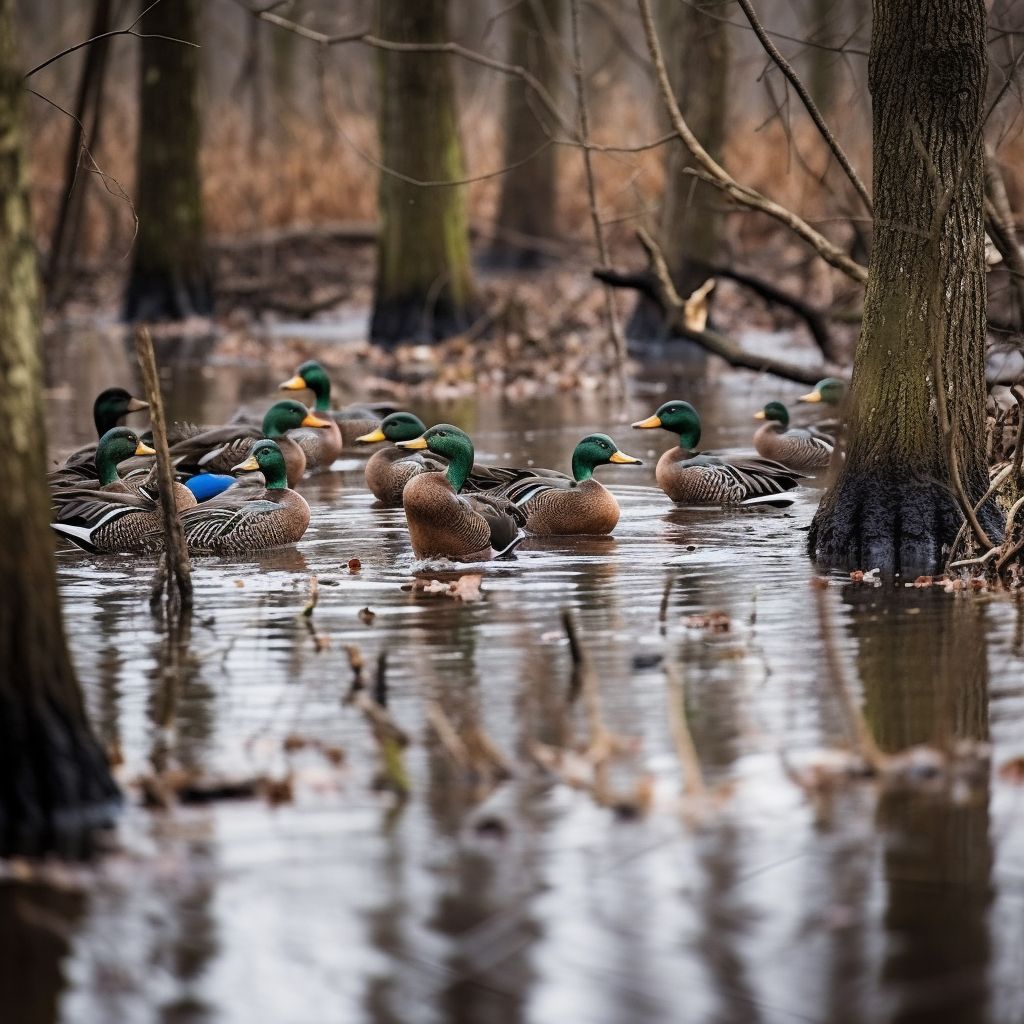Duck
Ducks are a diverse group of waterfowl belonging to the Anatidae family, which also includes swans and geese. Found throughout the United States, ducks are known for their distinctive waddle, webbed feet, and waterproof feathers. In the late 19th century, ducks played an important role in the daily life of many Americans, as they were hunted for sport and sustenance, raised for their meat and eggs, and admired for their beauty and grace.
Species of Ducks in the United States
There are several species of ducks native to the United States, which can be divided into two main categories: dabbling ducks and diving ducks. Each group has distinct characteristics and behaviors that set them apart from one another.
Dabbling Ducks
Dabbling ducks are named for their feeding behavior, which involves tipping forward in the water to forage for food near the surface. Common dabbling duck species in the United States include the following:
Mallard (Anas platyrhynchos): Perhaps the most well-known duck species, the mallard is characterized by its distinctive green head and yellow bill in males, while females have a more subdued, mottled brown plumage. Mallards are found throughout the United States and are commonly spotted in ponds, lakes, and marshes.
American Black Duck (Anas rubripes): This species is similar in appearance to the female mallard but is slightly larger and darker in color. American black ducks are found primarily in the eastern United States, in habitats such as freshwater marshes and wooded swamps.
Northern Pintail (Anas acuta): Known for their slender, elegant appearance and long, pointed tail feathers, northern pintails are found throughout the United States, particularly in wetland areas.
Diving Ducks
Diving ducks, as their name suggests, dive below the water's surface to forage for food. Common diving duck species in the United States include the following:
Canvasback (Aythya valisineria): Recognizable by its distinctive sloping forehead and reddish-brown head, the canvasback is a large diving duck found primarily in the central and eastern United States.
Redhead (Aythya americana): Similar in appearance to the canvasback, the redhead has a rounder head and a more vibrant red coloration. Redheads are found throughout the United States, especially in freshwater marshes and lakes.
Lesser Scaup (Aythya affinis): A small diving duck with a rounded head and blue-grey bill, the lesser scaup is found in various habitats across the United States, including lakes, ponds, and marshes.
Ducks in Daily Life
In the late 19th century, ducks played an important role in American daily life. They were hunted for sport and sustenance, with their meat and eggs considered delicacies by many. Duck hunting was a popular pastime, and various tools and techniques were developed to improve hunters' success, such as decoys and specialized calls.
Additionally, ducks were raised on farms for their meat and eggs, with certain breeds, like the Pekin and Rouen, prized for their size and productivity. Ducks were also kept as pets, their unique appearance and friendly nature endearing them to many.
Conservation Efforts
As the popularity of duck hunting grew, concerns arose about the potential impact on duck populations. In response, conservation efforts were established to protect and manage duck populations, ensuring their continued presence in the United States. These efforts included the establishment of wildlife refuges, the regulation of hunting seasons, and the promotion of sustainable hunting practices.
In conclusion, ducks have played a significant role in American culture and daily life in the late 19th century. Their diverse species and habitats have made them an important part of the United States' natural landscape. Ducks have also contributed to the economy, both as a source of food and as a focus of recreational hunting. The growing awareness of the need for conservation and sustainable hunting practices has helped ensure that future generations will continue to enjoy the presence of these fascinating waterfowl.

